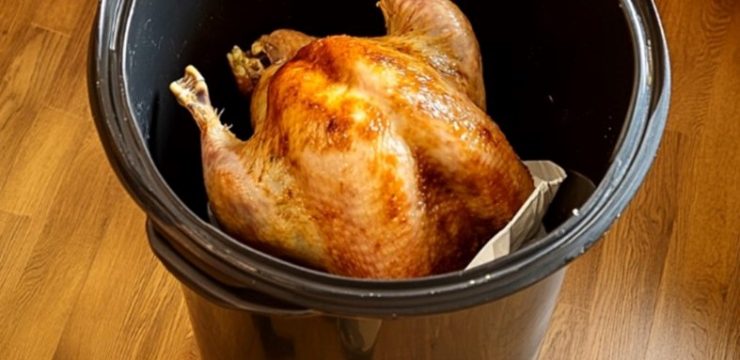Cooking for your family is one of life’s great joys, but ensuring food safety is just as important. During a recent dinner with my mother-in-law, we had a debate about a specific kitchen practice—rinsing ground beef. She skipped this step while cooking, which led me to decline the meal and keep my children from eating it, too. This raised a big question: Is rinsing ground beef really necessary? Let’s explore the science behind this practice to determine whether it’s helpful or something we can skip altogether.

Is It Safe to Rinse Ground Beef?
There’s a lot of debate about whether rinsing ground beef is necessary. According to the U.S. Department of Agriculture (USDA), rinsing ground beef is not recommended. In fact, it can be more harmful than helpful. Here’s why: when you rinse raw meat, water droplets can splash onto nearby surfaces, utensils, or even other food, spreading bacteria across the kitchen.
Instead of rinsing, the USDA emphasizes that cooking ground beef to an internal temperature of 160°F is the safest way to kill harmful bacteria like E. coli or Salmonella. This approach ensures that bacteria in the meat are destroyed, making the food safe to eat without the need for rinsing.
The Health Risks of Rinsing Ground Beef
It’s natural to feel uneasy about not rinsing ground beef, especially when we’re constantly reminded of bacteria on raw meat. However, rinsing doesn’t solve this problem—it may actually make it worse.
When you rinse raw meat, the water can splash bacteria onto surfaces, countertops, and other foods, increasing the risk of cross-contamination. This is especially concerning for foods that won’t be cooked further, such as salads or raw vegetables. To prevent this, focus on washing your hands, utensils, and surfaces thoroughly after handling raw beef. As mentioned earlier, cooking the meat to the correct temperature is the most effective way to eliminate bacteria.
Does Rinsing Ground Beef Reduce Fat?
Some people think that rinsing ground beef helps reduce its fat content, but that’s a misconception. While it might seem like rinsing could wash away some of the fat, it could also wash away valuable nutrients like proteins and minerals. In reality, rinsing doesn’t significantly reduce fat and may even lower the nutritional quality of the meal.
If you’re looking to cut fat from ground beef, there are better options:
- Choose Leaner Cuts: Opt for ground beef labeled 90% lean or higher.
- Drain After Cooking: Use a colander to drain the cooked beef or blot the excess fat with paper towels. These methods effectively reduce fat without losing essential nutrients.
Navigating Food Preferences and Safety Concerns with Family
Let’s face it—family meals can sometimes come with disagreements. The situation with my mother-in-law made me reflect on how different people approach food safety. While some focus on flavor, others are more concerned about safety or nutrition.
When it comes to kitchen habits, it’s important to have open and respectful conversations. Sharing reliable resources, like USDA guidelines, or cooking together as a family can help bridge gaps in understanding. The goal is to find common ground so everyone feels confident about the meal.
Tips for Safe and Delicious Ground Beef Meals
If you want to ensure your ground beef meals are safe and tasty, here are some practical tips to follow:
- Buy Fresh Ground Beef: Always purchase ground beef from a trusted source and make sure it’s fresh.
- Store Properly: Keep ground beef in the refrigerator and use it within two days, or freeze it for longer storage.
- Avoid Cross-Contamination: Wash hands, surfaces, and utensils thoroughly after handling raw beef.
- Cook to the Right Temperature: Make sure the internal temperature of ground beef reaches 160°F.
- Reduce Fat After Cooking: Use a colander to drain excess fat or blot with paper towels.
- Teach Safe Cooking Habits: Involve your family in safe cooking practices to create a routine everyone can follow.
By following these tips, you’ll create meals that are both delicious and safe for your family.
Conclusion: Making Informed Choices in the Kitchen
When preparing meals for your family, making informed decisions about safety and nutrition is crucial. In the case of ground beef, the evidence is clear—rinsing isn’t necessary and could actually increase health risks. Cooking ground beef to the proper temperature is the safest way to ensure a meal is free from harmful bacteria.
Balancing food safety and personal preferences can be challenging, but open communication helps create a shared understanding. By sticking to safe cooking practices and educating your family, you can enjoy meals that are both wholesome and worry-free.
In the end, adopting these simple changes in your kitchen habits creates a foundation for healthier meals that everyone can enjoy—without the risk of harmful bacteria.





